Mechanical Fuel Injection Pumps are Like an Engine Within an Engine
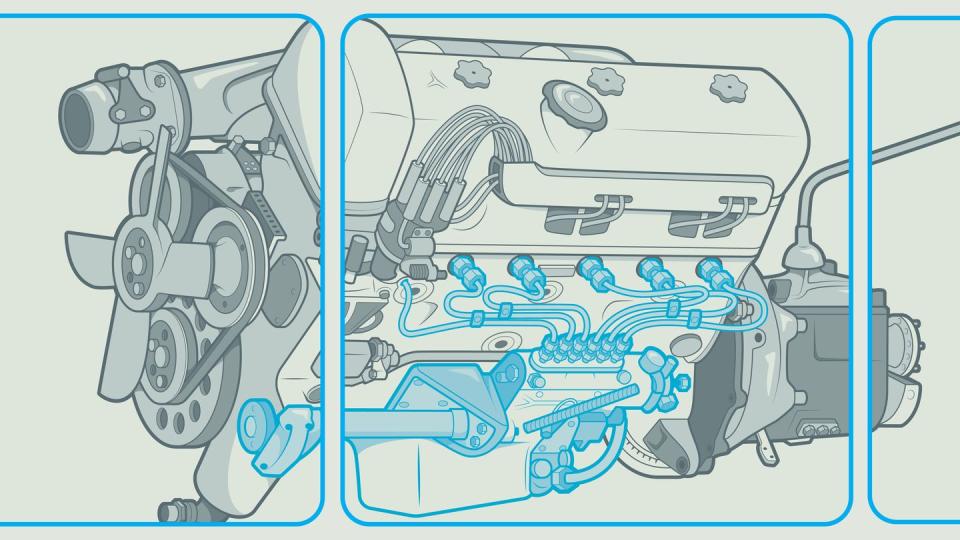
Electronic fuel injection is older than you think, the earliest example being the failed Bendix Electrojector system from 1957. Bosch bought the rights to the Eletrojector system and developed it into D-Jetronic, which evolved into the modern computerized systems we know today. But before Bosch's Jetronic systems became the standard, we had purely mechanical fuel injection. It's a fascinating piece of technology.
Mechanical fuel injection (and fuel injection as a whole) dates back to the dawn of the automobile. The first diesel engines, which were built in the late 19th century, used simple mechanical fuel injection systems. The world's first V-8, the Antionette 8V airplane engine of 1904, had a belt-driven fuel pump that filled reservoirs above the intake valves of each cylinder. The vacuum created by air rushing into the combustion chamber on throttle openings pulled fuel from the reservoir.
Diesels aside, MFI didn't really blossom until the Second World War, where its use in Luftwaffe aircraft proved devastatingly effective in comparison with the Nazi’s carbureted English counterparts. The U.S., Soviet Union, and Japan all followed Germany in developing fuel-injected aero engines, and after the war, the technology made its way into cars. Our focus today is on the wonderfully complex European systems.
"You can split these systems into two pieces," says Santo Spadaro, who runs the much-loved Domenick European Car Repair in White Plains, New York. Spadaro helps keep many of these complicated classics on the road, and is a hands-on expert of the era. "There's the pumping, mechanical side of it, which is pure hydraulics, let's say…and that is controlled by what you would call a logic section. The logic section is essentially a mechanical computer."
Bosch
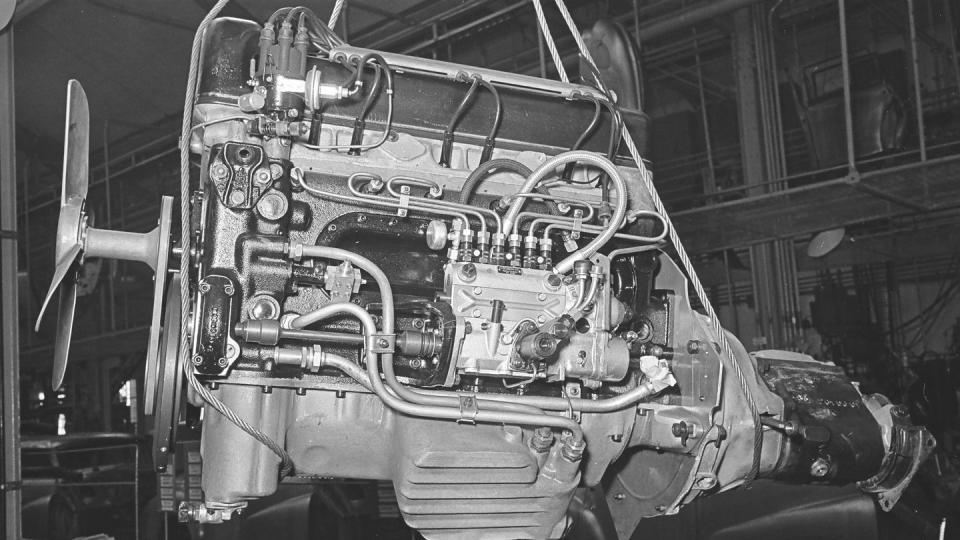
It was Bosch that developed the fuel-injection system for the Daimler-Benz aero V-12—based on technology it supplied for Mercedes diesel engines—so it was only natural that it would come up with the first successful MFI system for gas-powered cars. While the Bosch system debuted on two small-displacement, two-stroke cars in the early Fifties, it was under the hood of a Mercedes-Benz where it was really proven. Specifically, it proved itself in the W 196 Formula 1 car, which Juan Manuel Fangio used to dominate the 1954 and 1955 seasons. That system was then adapted for the Mercedes-Benz 300SL Gullwing.
A February, 1956 article from the S.A.E. Journal explains the system well. The fuel pump unit is like a miniature engine next to the actual engine. It features a unit consisting of a plunger, return spring, and a barrel for each cylinder, which are attached to an eccentric shaft. The shaft is driven off the engine's crank, and a diaphragm adjusts the shaft based on throttle position, ambient temperature, intake vacuum, and barometric pressure.
Mercedes located the fuel injectors of the 300SL where the spark plugs would otherwise go in the 300 S sedan. The whole system is timed along with the engine, so the atomized fuel for each cylinder arrives at the exact right moment, and the diaphragm ensures that there's a precise amount. Pressures were immense, with fuel moving around at 1700 psi in the fuel lines and injected into the combustion chamber at 640 psi.
In the 300SL, the system was revolutionary. The original owner's manual touted the car's ability to pull from 15 mph in fourth gear all the way to the 140-plus-mph top speed. In a carbureted car, you couldn't dream of such a thing, bogging down and stuttering.
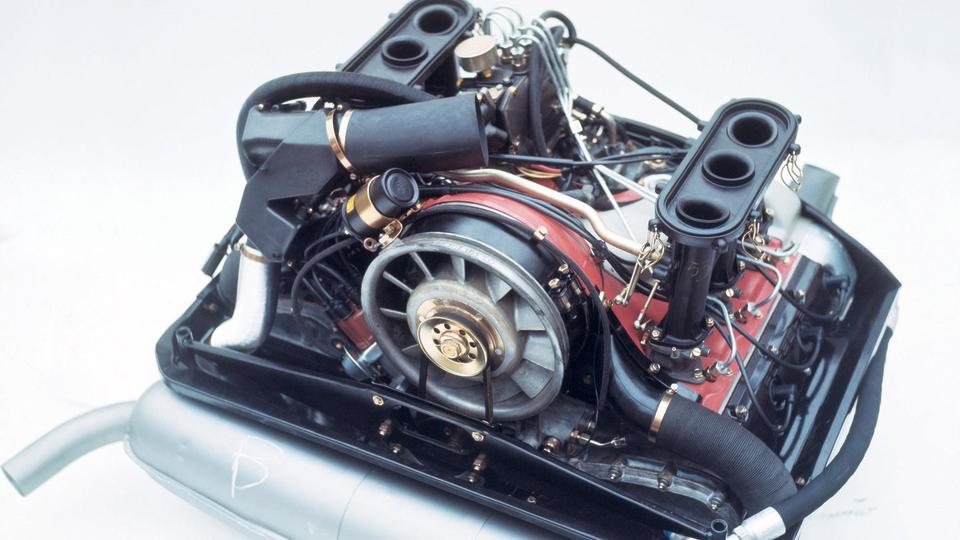
While gasoline direct injection didn't catch on for decades, Bosch developed the system to use port injection. It found homes in various Mercedes engines including the company's top-of-the-line straight-sixes and its legendary 6.3-liter V-8. There was also the Porsche 911, which introduced fuel injection to production models in 1968 and maintained the Bosch system through 1973.
As Paul Frére's The Porsche 911 Story outlines, the system was different in application than the original Mercedes 300SL's. For starters, the fuel pump was driven off the left-hand camshaft, and the plungers were actuated by a more traditional camshaft than an eccentric shaft. Fuel was metered out by rotating the plungers, which were turned by various levers looking at throttle position, engine speed, engine temperature, and barometric pressure. There was also a cold-start solenoid that enriched the fuel-air mixture headed to the combustion chamber.
Lucas
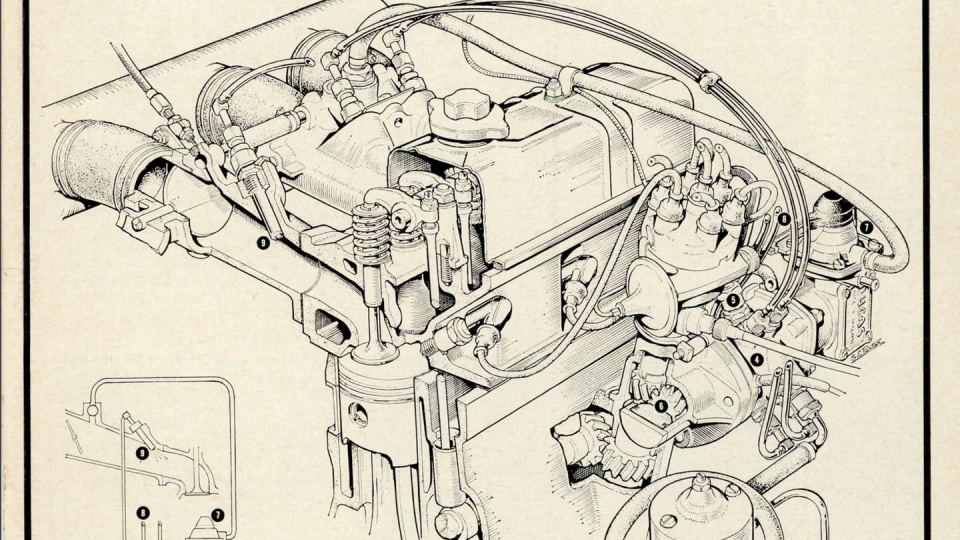
Stepping back to the mid Fifties, Mercedes' biggest racing rival in sports cars was Jaguar, and it too had a mechanical fuel-injection system, in this case developed by its fellow Brits at Lucas. This system was far simpler than what Bosch had dreamed up, and effective, too. The same article from the S.A.E. Journal explains that the Lucas injection system centers around a sleeve driven by a camshaft at a 1:1 speed. The sleeve had holes drilled along its length for each of the engine's cylinders, and within it, a piston that moved back and forth freely between two stops, covering and uncovering the holes. One stop was fixed, but the other was movable by a lever attached to two springs—one automatically adjusting the mixture to manifold pressure, the other a manual override to enrich the mixture.
Mercedes pulled out of racing after the 1955 Le Mans disaster, leaving Jaguar and Ferrari to battle for sports-car glory. A Jaguar D-Type equipped with the Lucas injection system won Le Mans in 1957, and soon after, this MFI was adopted by a number of racing cars throughout England. It wasn't quite as sophisticated as what Bosch did with Mercedes, with no adjustments for barometric pressure or ambient temperature, but it was very well suited for racing.
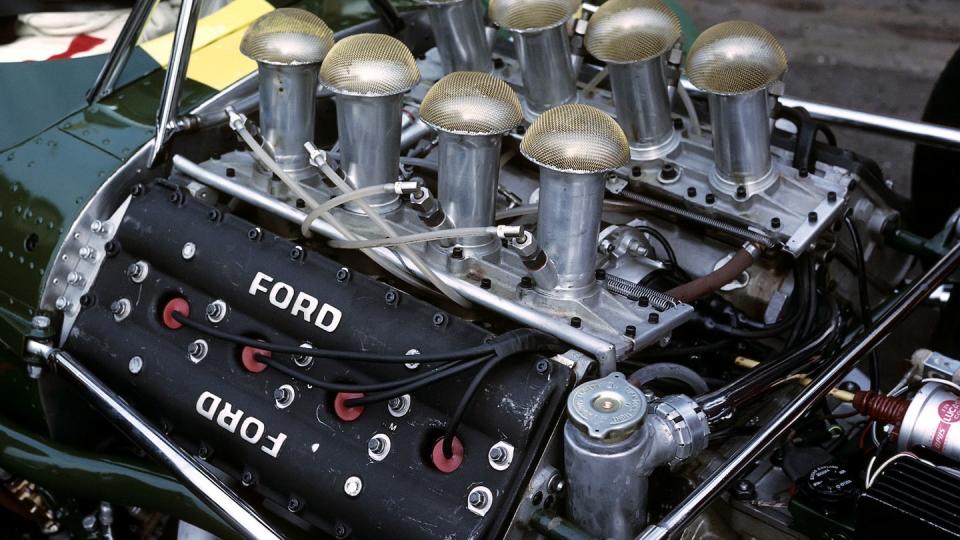
A December, 2000 article from Motor Sport explains that in the Sixties, the system was modified by use of a cam that moved the mixture stop, and it was adopted by the best Grand Prix engines of the time. Coventry Climax used it for its V-8s, as did BRM, and eventually it made its way to the dominating Cosworth DFV. "Although costly because of the precision machining involved, it was compact, reliable, accurate, much simpler to maintain than difficult-to-balance multiple carburettors, and released more power as well as saving fuel," Motor Sport said. "In conjunction with the Lucas OPUS (oscillating pick-up system) contactless ignition, introduced later, it formed a complete fuelling and ignition package for high-performance six- and eight-cylinder engines, one which just about everyone in F1 came to use. Not until full electronic control of spark and spurt became possible in the early Eighties was it finally outmoded."
But, production-car applications were thin on the ground. Lucas developed a Mk II system which was used in the Triumph TR5. The sleeve here was driven at half engine speed off the distributor, and the movable stop was adjusted based only on intake vacuum. A fan site for the TR5 notes that the system was considered unreliable in its day—despite its mechanical simplicity—and it never even made it to the U.S. Instead, we got the carbureted TR250, which was admittedly very down on performance compared to the TR5.
SPICA Inezione
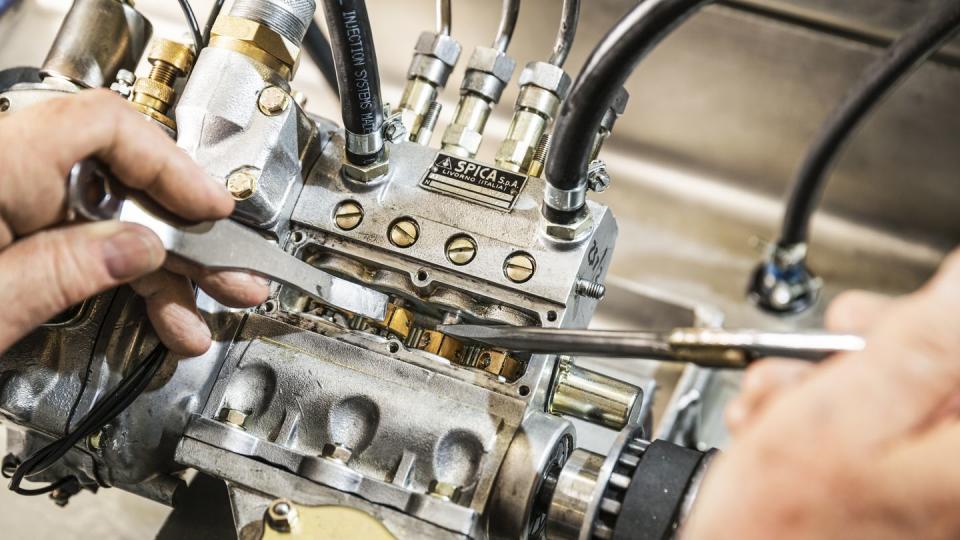
In contrast with Triumph, Alfa Romeo only brought fuel-injected cars to the U.S., saving carbureted cars for the home market. Its SPICA—named for the company that developed it, Società Pompe Iniezione Cassani & Affini—fuel-injection started as a racing alternative to the dominant Lucas Mk I. But in the late Sixties, it was quickly adapted for road-car use so Alfa Romeo models could pass EPA testing.
Spadaro's first car was a SPICA-equipped Alfa Romeo GTV and he's been working on the systems for decades since. "There's a three-dimensional cam, which rotates on throttle position," he explains. "And then there's a speed aspect where as you're increasing RPM, there are ball bearings on a ramp and as the [engine] speed goes up the centrifugal force goes up and the ball bearings go farther up the ramp and it moves that three-dimensional cam in and out."
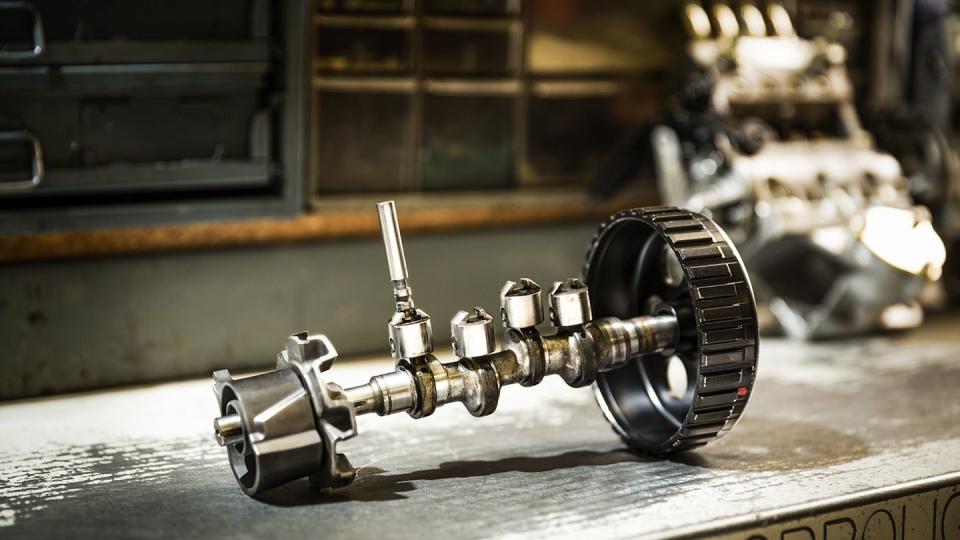
For the avoidance of doubt, the cam is considered three dimensional because it moves in three dimensions—it rotates axially, and it moves backwards and forwards. A follower on the cam moves a rack that rotates the plunger pumps, therefore increasing or decreasing the amount of fuel injected during each stroke. Each plunger is attached to a connecting rod that's attached to a shaft driven off the crank at half engine speed. Like later examples of the Bosch system there are additional levers that adjust the rack to compensate for different running and atmospheric conditions.
Remarkably, the SPICA system allowed Alfa Romeo to meet U.S. emissions standards throughout the Seventies with no sacrifice in performance. But, it was controversial. For whatever reason, Alfa Romeo didn't want independent mechanics messing with the system, so it never published any sort of technical documentation. "In the Seventies, Alfa was very close to the vest," Spadaro says. "They didn't give out a lot of information. The information that we had in the Seventies and Eighties was basically the stuff that we divined on our own."
This divined information was collected and distributed by Alfa Romeo clubs, and eventually the public got its hands on leaked internal documents. But, for a long time SPICA was very difficult to repair, and so many mechanics and owners stripped out the system and installed carburetors instead. It’s something Spadaro considers a shame; properly set up and maintained, a SPICA system works wonderfully. He put 250,000 miles on his high-school GTV and still services it for the current owner. It still has its original fuel pump.
Kugelfischer
Bosch wasn't the only German supplier offering fuel injection. Debuting with the Peugeot 404 in 1962, the Schäfer Einspritztechnik company made a system called Kugelfischer, which gained fame in the BMW 2002tii about a decade later. In basic principle, it's not dissimilar to the Bosch and SPICA systems described, with spring-loaded plungers for each cylinder all driven off a common camshaft. But, rather than rotating the plungers to determine the amount of fuel sprayed through the injection lines, fuel delivery was defined by changing the stroke of the plungers.
This was accomplished by a cone-shaped device underneath the camshaft that moved backwards and forwards based on engine speed. A BMW technical manual produced in the early Eighties explained that it worked somewhat like a speedometer, with a magnet transmitting engine speed to the cone via a set of gears. The cone moved backwards and forwards based on throttle position, while its rotation was defined by engine speed.
BMW was perhaps the most famous user, and while the 2002tii was the only road car with Kugelfischer, most of its race engines through the mid Eighties used the system. Ford also employed Kugelfischer on the Capri RS2600, and Porsche used it for its race engines in the mid Seventies.
So, What Happened?
Ironically, it was probably Bosch that killed mechanical fuel injection. Chrysler was the first automaker to use the Bendix Electrojector system, but it was way too ahead of its time. The late Fifties were the early days of solid-state transistors, and they just weren't up to the task for running a computerized injection system. But around a decade later when Bosch released D-Jetronic, the technology had matured significantly.
For a while, Bosch's K-Jetronic system was more popular. It's a purely mechanical system, but one that injected fuel continuously and had a much simpler pump design than these other systems described here. But all the while, computer-controlled injection was getting better and better.
Computer-controlled systems were far less mechanically complex, without all the levers and valves and sensors required to define fuel maps, and they offered even greater flexibility. And once Bosch developed Motronic, a system that governed both fuel and ignition, MFI's days were numbered. Now it's something of a dark art, boosted by mechanics like Spadaro who appreciate the elegance of a precision-made, all-analog system.
You Might Also Like

 Yahoo Autos
Yahoo Autos 